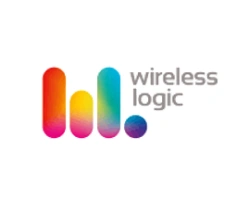Previously, IoT and M2M have generally been associated with low bandwidth applications, such as telematics and measurement equipment that require relatively low data usage, providing relatively benign data back to central services for business analytics. In 2023, it is going to move to another level. Let’s take a look at what developments and IoT trends we can expect to see in 2023.
“In a very brief period, IoT has moved from a tool with limited applications and questionable security, into a global phenomenon, used by 48 percent of large enterprises.“
-Owen Keenan-Lindsey
Five IoT Trends for 2023
#1: Higher Bandwidth Applications
Until recently, IoT has been held back by the type and volume of data that its applications were able to handle. But in 2023, we are seeing the IoT trend of a move into the area of higher bandwidth applications with larger volumes of data being transmitted at higher rates. And this is going to lead to a significant enlargement of the potential for the technology.
#2: Real-Time Data Processing
With higher bandwidths, comes increased capability. So, we will see a lot more companies using IoT for real-time data processing by centralized services. One of the major issues with IoT tech has been the enormity of the data sets produced.
While machine learning (ML) and machine-to-machine (M2M) processing are already deployed to expedite data analysis, there is still a lag between data collection and processing/analysis in most areas. In 2023, there is going to be a greater push toward real-time analysis in a wide range of scenarios, including video.
#3: Drone & Autonomous Machine Applications
In November 2022, Science Direct published an article about the Internet of Autonomous Things (IoAT). Referring to “things that can conduct necessary actions autonomously by employing AI algorithms without the need for human interference or contact.” So far, there have been limited applications capable of achieving this. However, there will be notable growth in this area as we move through the year.
One of the largest growth areas that we will see become dominant within a very short space of time will be the transport and logistics sectors. Usually when people talk about this their first thought is autonomous trucks, especially in the light of high-profile products such as the Tesla Semi, but that still has plenty of challenges to overcome due to the chaotic nature of real-world roads.
Something that is here today is autonomous warehousing. From autonomous forklifts to picking arms and autonomous shelving systems which ultimately intend to completely replace the work that humans do in those facilities with numerous benefits to potential early adopters struggling with high staff turnover, industrial disputes, and a generally tight labor market.
It is well known that Amazon’s entire future profitability model is based on being the earliest adopters in this area. As of June 2022, Amazon Robotics deployed over 520,000 machines to its warehousing and distribution centers around the world.
#4: Monitoring Applications
IoT is already used for a wide range of monitoring applications from weather to desk occupancy and legionella compliance. But what has been conspicuously absent is monitoring tech that can make autonomous critical decisions to improve efficiency.
Advancing artificial intelligence (AI) and ML technology, combined with the enhanced data capacity of IoT will open the door to truly autonomous monitoring, freeing managers from unnecessary alerts and preventing any disruption to necessary services or processes.
#5: Enhanced Security
Security has become an increasing pain point for IoT. In the development of the original applications, security was an unfortunate afterthought. And as systems have been added to and developed, more flaws are discovered, leaving more potential entry points for would-be hackers.
Meaning that cybersecurity has become and will remain the number one priority for IoT. Both in new tech, where there will be a focus on security-first development, connectivity, and the integration of legacy systems.
New Focus on Business-Critical Solutions
The novelty factor of IoT and the constant drive to get ahead has led to some unnecessary adoption. With budgets pressed and technology advancing, the importance of identifying business-critical IoT solutions is being driven home.
In 2023, we’re going to be seeing a focus on finding IoT that has the potential to be transformative. So, managers will need to ask questions about predicted ROI, the margin that will be brought by the new tech vs current solution, resilience, compatibility with legacy technology, and who is responsible when things go wrong.
Owners must remain focused on the core elements of their business when considering IoT solutions, in order to avoid unnecessary expenditure on novelty functionality. Despite the turbulence of the last few years, IoT adoption remains a priority for a huge number of businesses. Business owners need to think carefully before IoT investments. Being aware of the 2023 IoT trends can be an extremely useful place to start.
This article first appeared in: https://www.iotforall.com/what-iot-trends-can-we-expect-to-see-in-2023
























